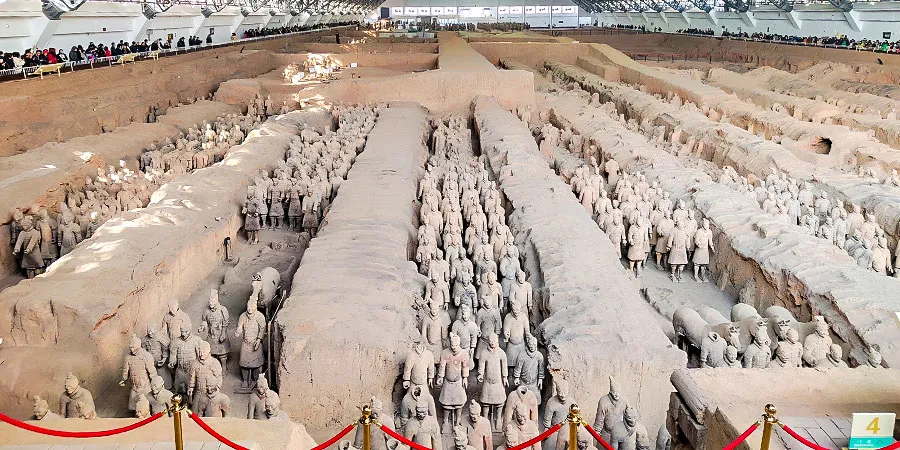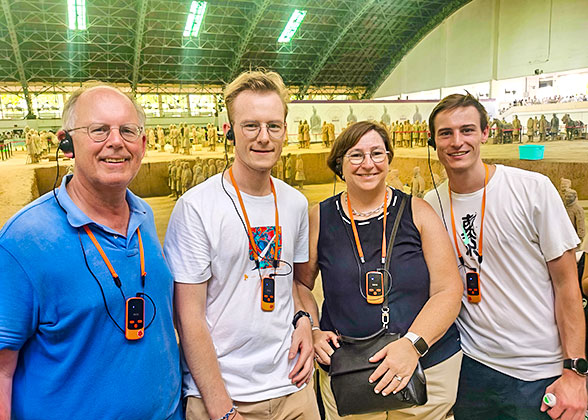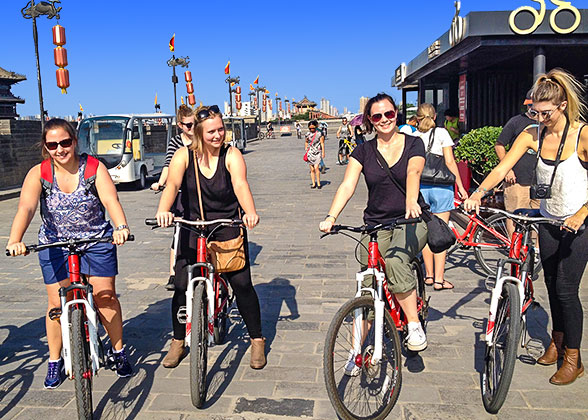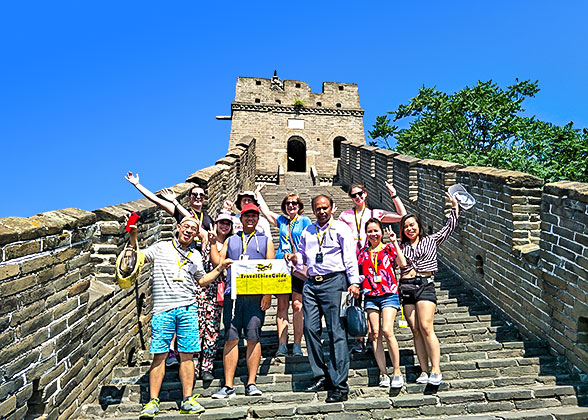Most visitors are familiar with
Pit 1,
Pit 2, and
Pit 3, which contain over 8,000 terracotta figures, including warriors,
horses, chariots, and numerous bronze weapons. However, few people know about
Pit 4. This pit contains no terracotta warriors, only backfilled soil, and is currently closed to the public. In addition to these four main pits, there are also several accessory pits, such as
Pit K0006,
Pit K0007,
Pit K9801, and
Pit K9901, as well as Stable Pits, Slaughter Pits, and Rare Birds and Animals Pit.
3. Terracotta warrior figures include more than soldiers.
When people think of the Terracotta Army, they often picture stern generals, brave
infantry warriors, and
cavalry warriors. However, the Terracotta Army pits have also yielded a variety of other figure types, each with distinct postures and expressions. These include agile
kneeling archers and
standing archers, calm civil official figures, nimble
chariot warriors, lively acrobatics figures, and even figures responsible for feeding and training swans, wild geese, and other exotic animals.
You May Like:
4. No two terracotta warriors are exactly alike.
Remarkably, even though thousands of terracotta warrior figures form a unified, orderly underground army, each one is unique in
face shape,
hairstyle and headgear, and other details. If you carefully observe them up close, you may notice differences in age and rank through variations in their expressions, postures, and attire. What's more, details such as wrinkles or frowns are clearly visible. How did craftsmen of the
Qin dynasty (221 - 207 BC) create over 8,000 distinct terracotta warrior figures with limited resources? In fact, modeling the figures after real soldiers from the Qin army, they used molds to create the basic shapes, then carved individual details like facial features, beards, and hair by hand, giving every warrior a unique face.
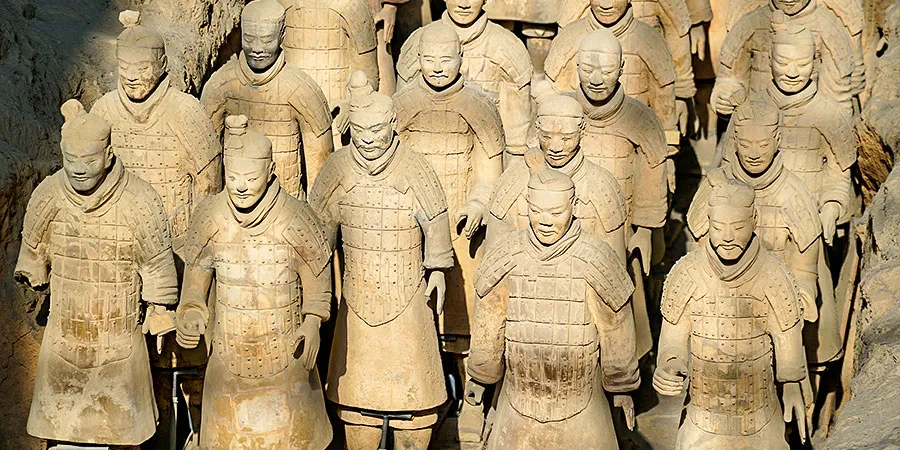 |
| Terracotra Warriors with Different Appearances |
You May Like:
5. The terracotta warriors were originally painted with vivid colors.
Although the figures on display today appear mostly in earthy tan or grey tones, they were once brightly colored. Archaeologists have found that Qin craftsmen painted the warriors with more than ten different pigments, including white, black, orange, dark green, scarlet, pink, and purplish-red. So why did the colors disappear? After being buried for over 2,200 years and exposed to natural erosion, floods, fires, and other extreme conditions, the painted layers became extremely fragile. Once excavated, changes in humidity and other environmental factors caused them to flake off rapidly, leaving most figures in the grey tones we see today.
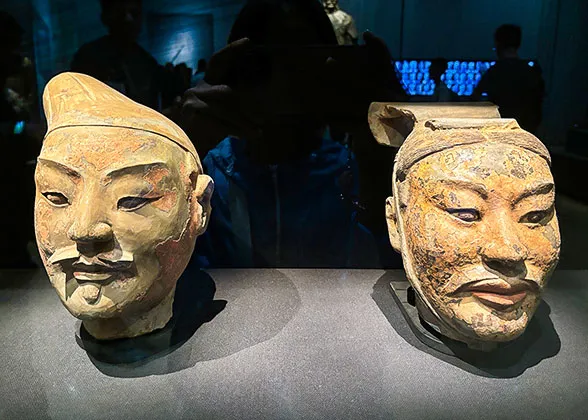 | | Colored Terracotta Warriors' Heads | | 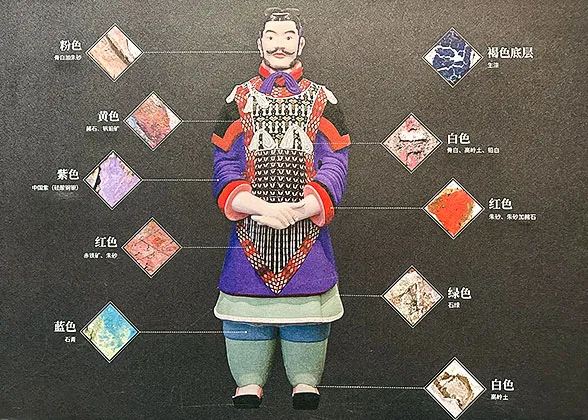 | | Restored Image of Terracotta Warrior's Colored Attire | |
Read more:
True Colors of Terracotta Warriors 6. All the terracotta warriors discovered so far have single eyelids.
Archaeologists note that all unearthed terracotta warrior figures currently on display have single eyelids; however, the reason remains uncertain. There are three main speculations: first, single eyelids were predominant among the population at the time; second, single eyelids appeared more stern, which fits the images of soldiers; third, the terracotta figures were originally made with single eyelids, and then painted double eyelids with pigment, but the pigment of double eyelids flaked away over centuries of burial and after excavation due to environmental changes, leaving them appearing single eyelids.
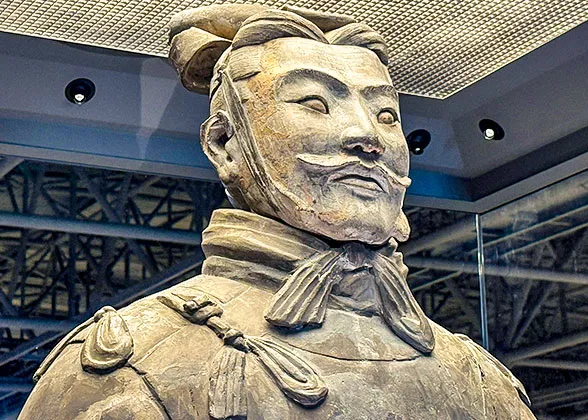 | | High-ranking Officer's Single Eyelids | | 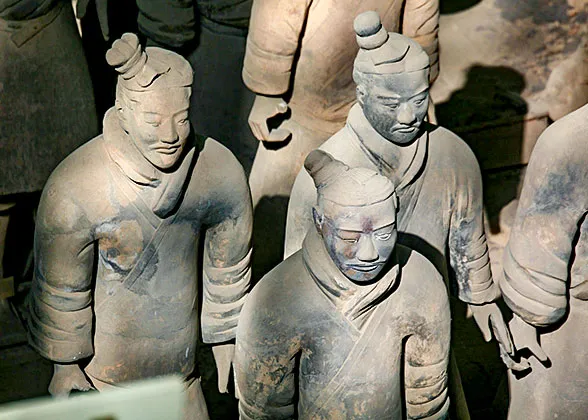 | | Infantry Warriors with Single Eyelids | |
7. No female soldiers have been found among the unearthed terracotta warriors.
Archaeological findings show that all the terracotta warrior figures discovered so far display clear male characteristics, such as Adam's apples, beards, and male hairstyles. Their armor and helmets also match those worn by Qin male soldiers. No female terracotta figures have been identified. This is mainly because the Terracotta Army was designed as the "underground army" of
Emperor Qin Shi Huang (259 BC - 210 BC), China's first emperor, modeled after the real Qin army, which was predominantly composed of men.
8. The Terracotta Army was accidentally discovered when villagers were digging a well.
In March 1974, nine villagers from Xiyang Village in Lintong District decided to dig wells to solve a water shortage. During the digging, they unexpectedly discovered broken terracotta figures wearing armor, along with bronze arrows and bricks. At that time, they were unaware that these might be cultural relics. Later, archaeologists from the local museum investigated and decided to excavate the site. As excavation work progressed, more and more terracotta figures were unearthed, and this area eventually became the famous Pit 1 of the Terracotta Army.

Further Reading:
